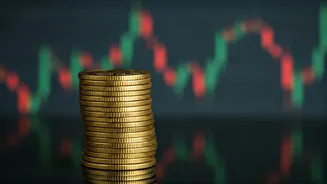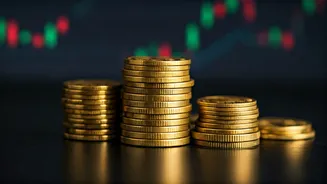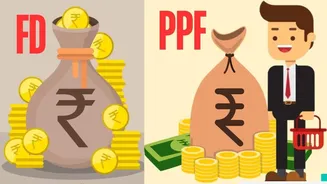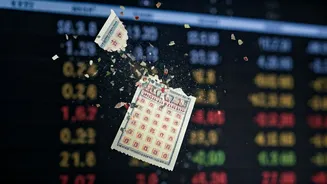Decoding ETF Pricing
Exchange-Traded Funds (ETFs) are designed to track a specific index, sector, or asset class, offering a convenient way to diversify your portfolio. However,
the price you pay for a global ETF in India doesn't always reflect its true value. Several factors can cause a discrepancy, leading to overpricing. These include currency fluctuations, trading volumes, and the costs associated with bringing these funds to the Indian market. It's essential to understand that an ETF's price on the Indian stock exchange is affected by the underlying assets' prices in their original market, adjusted for currency conversion. If the rupee depreciates against the currency of the ETF's underlying assets, the ETF's price in India may increase, even if the underlying assets haven't moved much. This often results in the ETF trading at a premium to its net asset value (NAV), which is the actual value of its holdings. Furthermore, lower trading volumes in India for certain global ETFs can contribute to wider bid-ask spreads, making it more expensive to buy or sell these ETFs, potentially leading to additional costs that investors have to bear. Thus, it is vital to research the ETF, understand the pricing dynamics, and compare its price with its NAV to avoid overpaying.
Currency Conversion Risks
Currency risk is a significant factor affecting global ETFs in India. When you invest in a global ETF, you're exposed to the exchange rate risk between the Indian rupee and the currency of the ETF's underlying assets. If the rupee weakens against the foreign currency, the ETF's value in Indian rupees will rise, potentially leading to returns. However, if the rupee strengthens, the ETF's value will decline, potentially eroding your returns. This risk is inherent in any global investment but is often amplified in ETFs, especially those with less trading activity in India. The costs involved in converting currency can also impact your returns. The fees charged by brokers and banks for currency conversion can eat into your profits, so it's essential to consider these costs when evaluating a global ETF. Moreover, the timing of your investment matters. Investing when the rupee is weak can offer a buffer if the currency strengthens later, but it also means taking on more currency risk from the outset. Monitoring currency movements and understanding their potential impact on your investments is a critical part of managing your portfolio. Therefore, investors should understand the dynamics of currency fluctuations and factor these into their investment strategies, particularly when considering global ETFs.
Trading Volume Impact
Trading volume is another critical factor to consider. Lower trading volumes can result in wider bid-ask spreads, which means the difference between the buying and selling prices is greater. This can increase the cost of buying or selling an ETF, thereby impacting your returns. In India, some global ETFs may have lower trading volumes compared to their counterparts in more developed markets. This can be due to various reasons, including the size of the investor base, the popularity of the ETF, and the availability of alternative investment options. When trading volumes are low, it can also be more difficult to execute your trades at the desired price. You might have to pay a higher price to buy the ETF or sell it at a lower price. This lack of liquidity can be a significant disadvantage, especially during volatile market conditions. Before investing in a global ETF, check its average daily trading volume and compare it with other similar ETFs. Higher trading volumes generally indicate more liquidity, making it easier to buy and sell the ETF at a fair price. Understanding the impact of trading volume on liquidity is thus essential for making informed investment decisions and managing associated costs.
Hidden Cost Considerations
Besides direct trading costs, global ETFs in India come with other expenses that are often overlooked. Expense ratios, which include management fees and operational costs, can significantly impact returns over time. These costs are deducted from the ETF's assets, reducing the value of your investment. Investors should carefully review the expense ratio of any global ETF before investing and compare it with similar ETFs. The expense ratio is usually listed in the fund's documentation, so it is crucial to read this before investing. Other hidden costs may include brokerage fees, stamp duty, and other transaction charges. These costs can vary depending on your broker and the specific ETF. Also, there are the costs associated with currency conversion, which were discussed in an earlier section. Consider these charges when calculating the overall cost of your investment. It's also important to consider the tax implications of investing in global ETFs. Different tax rules may apply to dividends and capital gains, so consult a financial advisor or tax expert to understand the tax implications of your investments. Being aware of these additional costs allows investors to assess the true cost of their investment and compare different investment options more effectively. Understanding these hidden costs is vital for maximizing returns.
Protecting Your Investments
Mitigating the risks associated with global ETFs in India starts with diligent research. Before investing, conduct thorough research on the ETF, including its underlying assets, expense ratio, trading volume, and currency exposure. Ensure that you have a clear understanding of the fund's investment strategy and objectives. Comparing the ETF's price with its NAV is essential to determine whether it is trading at a premium or discount. A premium can indicate overpricing, while a discount may offer a buying opportunity, although it's crucial to understand the underlying reasons. Diversifying your portfolio across different ETFs and asset classes can also help to manage risk. Avoid putting all your eggs in one basket by investing in a variety of global and domestic ETFs. Regularly reviewing your portfolio and rebalancing it as needed helps maintain your desired asset allocation. Stay informed about market conditions and currency movements. Currency risk can be partially hedged using currency hedging strategies, but these strategies come with their own costs and complexities. Consult with a qualified financial advisor to understand the best approach for your investment goals and risk tolerance. Making informed choices and actively managing your investments are vital to success in the dynamic world of global ETFs.














